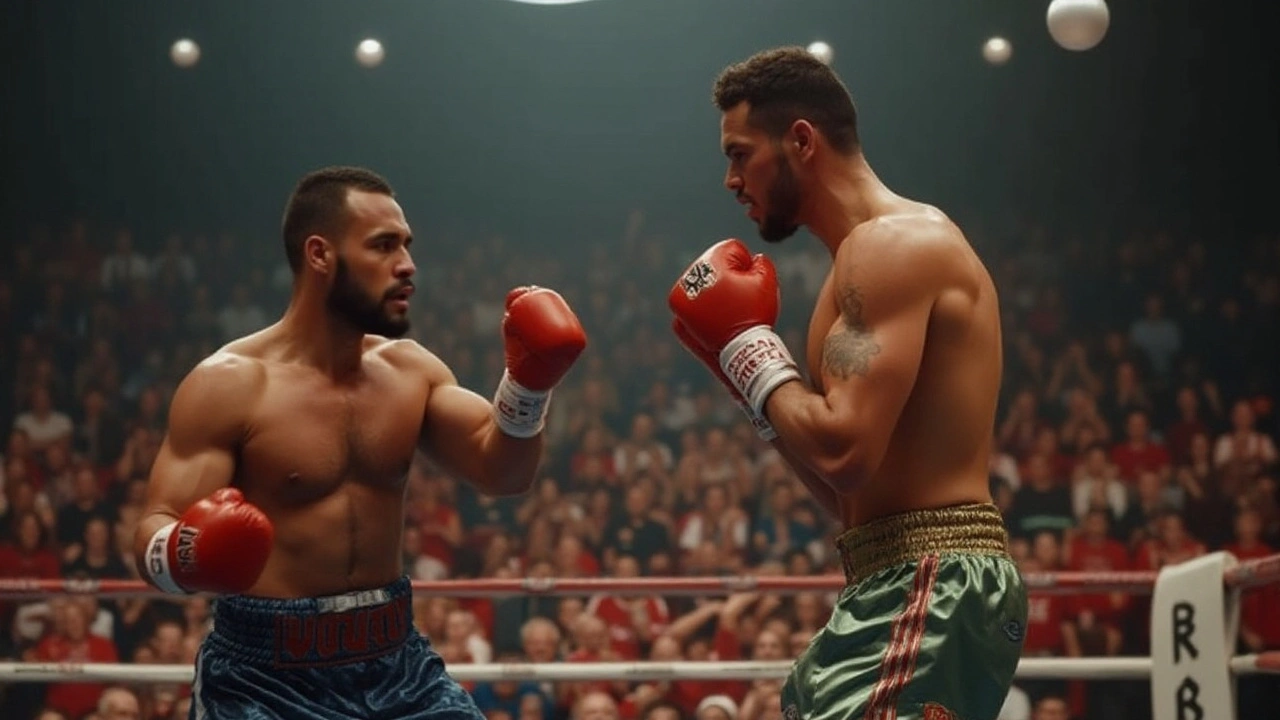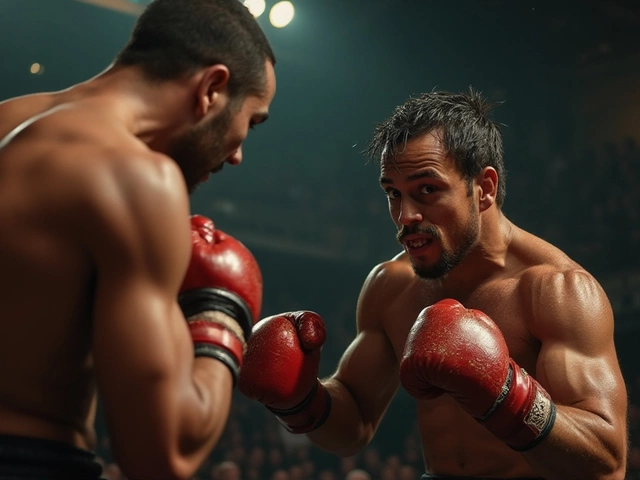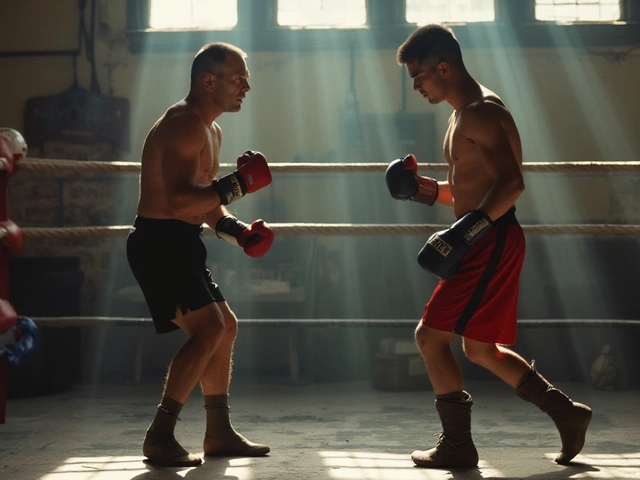The Art of Boxing: Beyond Just Punching

When most people think of boxing, what often comes to mind is the intense exchange of punches between two fighters. Yet, anyone who has ever laced up a pair of gloves knows it's not just about throwing fists. Boxing is an intricate sport grounded in a firm understanding of movement, strategy, and psychology.
The punch is indeed a central component, but understanding timing, distance, and rhythm turns a simple jab into a sophisticated weapon. Moreover, the ring's dance floor requires impeccable footwork, where every step can dictate the flow of the fight.
Defense is another pillar, where learning to block, slip, and weave can make the difference between victory and defeat. Beyond physicality, boxing is a mental battle—a test of willpower, focus, and adaptability. Through disciplined training, boxers hone these skills, crafting a tactical mindset that transcends mere physical strength.
- The Science Behind the Punch
- Footwork: The Dance of the Ring
- Defense: Shielding and Countering
- The Mental Game of Boxing
- Training: Building a Boxer's Arsenal
The Science Behind the Punch
When it comes to boxing, the punch is both an art and a science. It's not just the end result of countless hours in the gym; it’s a blend of physics, anatomy, and technique. Throwing a successful punch involves a harmonious alignment of strength, speed, and accuracy. The power behind a punch starts from the ground up—literally. Boxers learn to channel energy from their legs through a process known as kinetic linking. This sequence begins with strong foot placement, through the rotation of the hips, and culminates in an explosive release through the upper body. The body's torque, combined with proper alignment, is what allows a seemingly lightweight fighter to deliver a knockout punch.
The science continues with the mechanics of impact—where timing and precision play critical roles. Mike Tyson once said, "Everyone has a plan until they get punched in the mouth." This isn't just bravado; it's about the element of surprise in boxing strategy. Timing involves dissecting an opponent’s movements and exploiting openings. Accuracy requires a keen eye and quick decision-making abilities to ensure punches land precisely where they'll inflict the most damage. Despite being a sport of violent exchanges, boxing teaches control and discipline of energy, using the least amount of effort for the maximum result.
Let's dive into physiological factors as well. Muscles, tendons, and ligaments all must function seamlessly to support a boxer's movements. The latissimus dorsi, deltoids, pectoral muscles, and triceps dominate the arm mechanics, while core muscles stabilize motion. This interconnectedness is critical, which is why boxers often undergo diverse training regimens. These can include weightlifting, swimming, and plyometrics to enhance overall functional strength. Physicist Dr. David Grimshaw examines the punching speed and its relationship to force, noting that an elite boxer's punch can deliver up over a hundred g's of force. This is equivalent to a car crash, explaining why defense is equally emphasized in training.
Finally, understanding which punch to throw and the optimal time is crucial. Different punches—jabs, hooks, uppercuts—each have distinct advantages, influencing whether they are used defensively, offensively, or as counter-strategies. Recognizing the type of punch that will advance a fight plan is something boxers drill through sparring and shadowboxing, often with disarming speed and precision. Each punch type draws strength differently from the kinetic chain, and, when mastered, can change the course of a match in moments.
Footwork: The Dance of the Ring
In boxing, footwork is not just about moving around the ring; it is an intricate dance that lays the foundation for both boxing techniques and strategies. The ability to control the distance between you and your opponent is largely determined by your footwork. Fighters who master this element can dictate the pace of the fight, cutting off angles and maneuvering into positions that maximize their attack or defense potential. It's about gliding with precision, swiftly planting one foot and pivoting the other to create openings or evade danger.
Interesting historical data reveals the evolution of footwork in boxing. In the early days of bare-knuckle fighting, movement was minimal due to the slippery surfaces fighters battled on. As the sport evolved, legends like Muhammad Ali revolutionized boxing with their agile footwork, floating across the ring with notable speed and dexterity. Ali famously declared, "Float like a butterfly, sting like a bee," encapsulating the essence of his movement philosophy.
"Footwork isn't just about stepping in the ring and throwing punches, it's about knowing where to place your feet, knowing when to go forward and when to retreat. It can turn a simple fighter into a great one," explained Freddie Roach, renowned boxing trainer.
Effective footwork involves more than aesthetic movement; it incorporates technical drills that need dedication and practice. Shadow boxing, skipping rope, and ladder drills are some common training methods that enhance agility and coordination. Practicing these steps helps boxers maintain balance while delivering powerful blows. This aspect of boxing also greatly reduces the chances of being hit, as quick and smart movement can confuse and deter opponents.
Perhaps even more important is the psychological edge gained through superior footwork. A boxer confident in their movement capabilities can execute strategies more freely and remain composed under pressure. The freedom of movement allows customization of style, enabling fighters to adapt swiftly as the bouts unfold. Tactical use of foot placement can quickly alter the dynamics of a match, leaving opponents second-guessing every move.
With the growing emphasis on multi-disciplinary training, integrating other sports' movements into boxing training has become quite popular. For instance, incorporating dance elements can improve flexibility, while martial arts may enhance spatial awareness. Such training diversifies a fighter's footwork arsenal, offering a broader spectrum of tactical choices during bouts. All these efforts emphasize the key role footwork plays in shaping a boxer's career, blending science and art into a potent tool.

Defense: Shielding and Countering
Boxing, often referred to as the sweet science, is much more than just an exchange of blows. Central to this science is a robust defense mechanism, where the art of shielding and countering becomes crucial in the ring. While offense might catch the onlooker's eye, it is defense that can often decide the outcome of a match. A strong defensive strategy can exhaust an opponent and open up opportunities for smart counterattacks, making it an indispensable part of any boxer's skill set.
Effective defense begins with learning how to block and parry incoming punches. A well-timed block uses the forearms to create a protective shield, absorbing the power of an opponent's punches. Parrying, on the other hand, involves redirecting the energy of an attack, often using quick, subtle movements to deflect the punch off its intended path. The mastery of these techniques is often what separates the experienced boxers from the novices. A famous old-school boxing adage goes: "Keep your hands up." This simple yet profound advice highlights the importance of being ready to absorb or deflect blows, turning defense into a foundation for offense.
Beyond blocking, the art of slipping and ducking is essential for dodging punches entirely. Slipping involves quick head movement, allowing the boxer's head to move just outside the trajectory of an incoming punch. It's akin to dancing rhythmically in the ring, using the momentum of the punch to create an avenue for counter-attack. Coupled with body rotation, slipping keeps the fighter in striking range while maintaining a strong defensive position. The fighter then can capitalize on a mistimed punch to unleash a well-placed counter, a strategy famously utilized by defenders like Floyd Mayweather Jr., who once said: "Defense always came first to me because that's my cornerstone."
"The ability to execute and defend against combinations is really what separates a decent boxer from a great one." – Teddy Atlas
Ducking and weaving contribute significantly to effective defense. Unlike slipping, ducking involves lowering the entire body to evade punches aimed at the head. The quick drop can change the dynamics of a fight in an instant, often resulting in an off-balance opponent. Weave, on the other hand, is a shift to the side, typically accompanied by a counter-punch. This fluid movement demands impeccable timing and core strength, requiring fighters to be both agile and swift. Implementing these techniques efficiently can frustrate an opponent, leading them to expend energy fruitlessly.
Counter-punching is thus a vital skill linked closely to defense. It relies heavily on the boxer's ability to read the opponent's intentions and anticipate their moves. Using defensive maneuvers to draw the opponent in, a boxer can launch a sudden counter-attack that takes advantage of the opponent's temporary vulnerability. Skilled boxers use observation to study their opponents, noticing tendencies that can be exploited. It is a dance of anticipation and timing, where every slip and slide the defender makes is calculated to lead the opponent into a well-set trap.
The mental aspect of defense is equally important. Being calm under fire and reading the situation correctly can keep a fighter poised and ready. It's often said that a good defense is a good offense. This tenet is especially true in boxing, where shield and counter-form the foundation for a strategic victory. Incorporating these aspects into training significantly impacts a boxer's effectiveness inside the ring, honing their ability to transform defensive prowess into offensive opportunities.
The Mental Game of Boxing
At the heart of a brilliant boxing performance lies not just physical prowess, but an intricate psychological landscape. Enter any ring and you'll find that boxing transcends mere punching. It becomes a mental chess game where strategy is paramount. The best fighters don’t just react; they anticipate. They plan their next move several steps ahead, akin to a grandmaster at a chessboard. Mental fortitude bears significant weight in the outcome of every bout, often shaping the victor beyond raw physical talent. Discipline, patience, and focus intertwine to forge a sport that exists as much in the mind as it does in the muscles.
Delving deeper, it becomes evident that the psychological facets of boxing are just as critical as learning the art of bobbing and weaving. A seasoned boxer often says that the greatest distance in the ring is the six inches between their ears. This is where strategies are forged and executed under pressure. The mental gruel involves staying calm in the midst of chaos, maintaining composure while reading an opponent's cues and predicting their next action. Boxing skills must be backed by keen observational skills, where boxers look for subtle movements, the batting of eyes, the shifting weight, and any other cues that might telegraph an attack.
"A champion is someone who gets up when he can’t," noted the American boxing legend, Jack Dempsey, touching on the sheer mental tenacity required to succeed in the ring.
Moreover, the mental game encompasses a journey beyond the ring's limitations. Fighters cultivate resilience outside of their boxing gloves, carving routines that steel their minds against doubt and fear. Those who internalize setbacks and losses are less likely to fall into the psychological traps that can diminish their boxing techniques. Reflections on performance are vital, prompting boxers to adapt their strategy and perfect their craft constantly. Essential too are visualization techniques, exercises that have proven scientifically to enhance performance by preparing the mind for the myriad scenarios it might encounter in a fight.
Confidence is another cornerstone, deeply embedded in the psyche. It doesn't stem solely from victories but emerges from meticulous preparation and an unwavering belief in one's abilities. This confidence fuels a boxer’s conviction to stand tall even when the tide turns against them. Mental agility plays a significant role in a fight’s fluid dynamics, demanding adaptability to shift strategies on the fly. Whether during intense sparring sessions or under the glaring lights of a title match, a boxer's mental acuity determines how deftly they navigate pressure, often making the difference between triumph and defeat.
Interestingly, recent studies have shown that meditation and mindfulness practices are growing in popularity among fighters who wish to sharpen their mental edge. This emerging trend highlights that in modern boxing, mental stamina is as crucial as physical conditioning. To consistently succeed, athletes harness the power of mythotropy—the change and adaptation of the mind. Such developments underscore that boxing strategy continues to evolve, drawing from various disciplines to enhance a fighter's overall skill set.
In conclusion, while the physical attributes of a Boxer draw significant attention, the mental game remains the indomitable force empowering their journey. It is a crucial layer of boxing fundamentals, one that not only prepares them for the fight ahead but shapes them as individuals beyond the sport. Understanding its depth and embracing its intricacies can adorn any aspiring boxer's career with victories that resound with both might and mind.

Training: Building a Boxer's Arsenal
When it comes to developing a competitive edge in the ring, every boxer knows the importance of well-rounded training. Constructing a boxer's arsenal involves more than honing the power of your punch. It's about fostering a comprehensive skill set that includes agility, speed, endurance, and mental clarity. The foundation lies in blending traditional boxing techniques with modern fitness regimens, creating a dynamic approach to the sport.
An essential aspect of training is cardiovascular conditioning. Endurance stands as the backbone of a solid performance; during intense matches, it's what allows fighters to keep up the pace and stay agile. Boxers often engage in activities like roadwork, which involves running long distances at a steady pace, sometimes incorporating high-intensity interval training (HIIT) for bursts of speed to emulate round sprints. This combination not only builds stamina but also enhances recovery times, making athletes ready for the next onslaught.
Boxing skills go hand-in-hand with strength training, but contrary to popular belief, the aim is not always about bulking up. Instead, it's about building functional strength, which translates to powerful and efficient movements in the ring. Exercises such as plyometrics, kettlebell swings, and resistance training are integrated to develop explosive power and improve overall balance and coordination. Strengthening the core, through planks and medicine ball workouts, is crucial as it boosts punching power while protecting against body shots.
Footwork drills cannot be overstated, encompassing exercises that sharpen agility and dexterity. Quick feet can often outplay a heavy fist. Jump roping, shadowboxing, and ladder drills are favorites among boxers aiming to elevate their ring presence. These drills create a rhythm in movement that is vital during a competitive fight. Legendary trainer Cus D'Amato once said, "The hero and the coward both feel the same fear. It's what they do with that fear that makes the hero." His words resonate as boxers train their minds as vigorously as their bodies.
Strengthening mental fortitude is pivotal and incorporates techniques such as visualization, focus training, and stress management. Many boxers use mindfulness and meditation to stay present, ensuring their minds are just as prepared as their bodies. Visualization practices, where fighters mentally touch upon varied fight scenarios, allow them to rehearse responses to unexpected challenges. This mental rehearsal can significantly impact performance on fight night.
The nutrition component is often the unseen champion of training. Well-balanced meals that emphasize lean proteins, complex carbohydrates, and healthy fats fuel the intensive demands of boxing. Proper hydration is key to maintaining energy and preventing injury during exhaustive training sessions. Some boxers ensure they're getting precise intake by consulting with sports nutritionists to tailor diets that optimize their body composition and performance.
The pursuit of boxing mastery requires a deep commitment to refining all aspects of a fighter's training regimen. Whether it's diligently working on a perfect jab, gracefully moving around the ring, or sharpening mental acuity, the journey to becoming a well-rounded fighter is exhaustive and rewarding. In the end, a boxer's true strength lies in the skills they meticulously build within—and outside—the confines of the ring.


